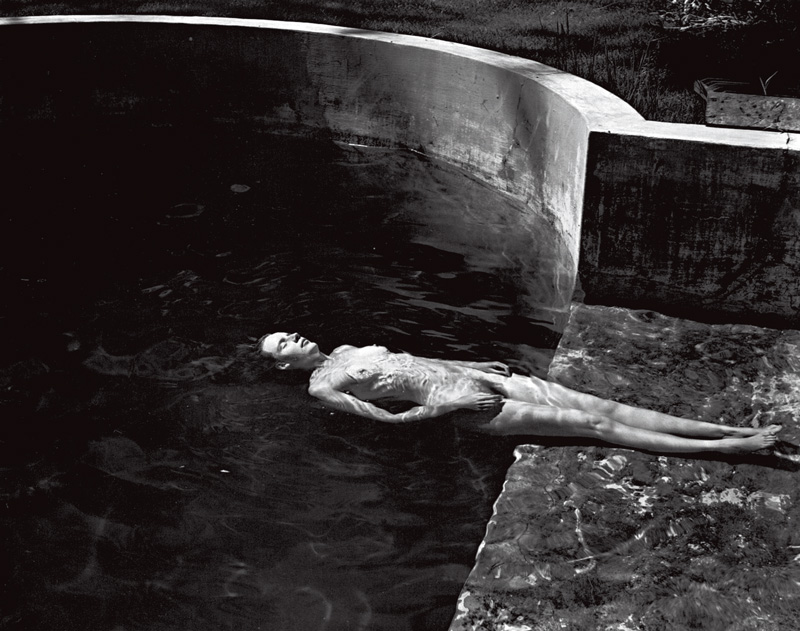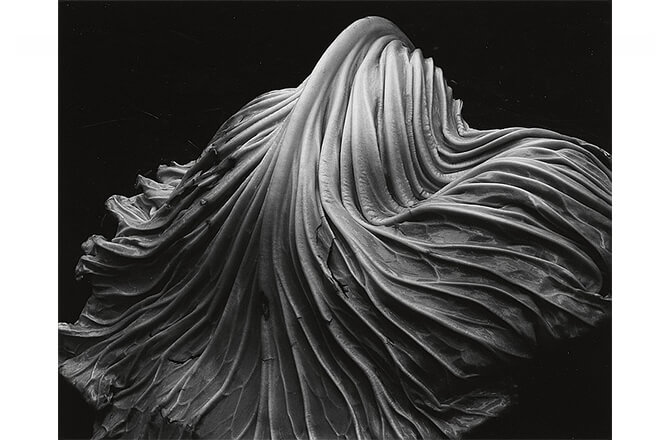Edward Weston is a master of still life photography, his manipulation of light to highlight shape, texture and form helped bring photography out of the shadow of painting and stand on it’s own as a credible art form.
Working for the majority of his career with and 8×10 field camera Weston’s work is staggeringly beautiful, the detail he was able to capture with such large negatives is truly extraordinary and must be seen in the flesh to be fully appreciated. Known for photographing elemental landscapes, sculptural nudes and everyday objects Weston will forever stand as a champion of photographic progression, and in this post, we will celebrate his technique and explore the recreation of his work.

There is something beautifully sculptural about Westons work, his subject, in this case a pepper, has a masculine quality. The curvature of the shoulder of the fruit resembles the contortion of a muscular structure under duress.
Like the sweeping brush strokes of a painter the fluidity of the object leads the eye in an arabesque fashion from left to right in the form of a contracted bicep. The majority of his still life work encapsulates this philosophy, each object in its own way possesses a gender through the consideration of shape and form.
Each object photographed by Weston is elevated beyond it’s traditional use and celebrated as something that has a uniqueness. It could be considered that his style life work is about a consideration for the individuality of anything, whether it be a fruit, vegetable or a person. Something that is natural and organic should be celebrated for what it is, celebrated for all its imperfections, scuffs and blemishes. An imperfect object that possesses a character all of its own has been allowed to exist in his photographs through the subtraction of colour and sophisticated manipulation of light.
Edward Weston biography
Edward Weston (1886-1958) was an American photographer known for his elegant and innovative black and white images of natural forms, nudes, and landscapes. He was born in Highland Park, Illinois, and grew up in a middle-class family with four sisters. Weston discovered his passion for photography when he received his first camera, a Kodak Bulls-Eye No. 2, as a gift from his father when he was sixteen years old.
Weston’s early photographic work was heavily influenced by Pictorialism, a photographic movement that sought to emulate the aesthetic qualities of painting through techniques such as soft focus and elaborate printing processes. In 1911, he moved to California and began working as a portrait photographer, and he soon established himself as one of the leading photographers of the West Coast. Weston’s early work was characterized by soft-focus images of landscapes, still life’s, and nudes that were heavily influenced by the Pictorialist style.

In the 1920s, Weston’s work began to evolve as he became interested in the modernist movement and the idea of photography as a pure and objective medium. He started to experiment with sharp focus, deep contrast, and abstract compositions that emphasized the visual qualities of his subjects. Weston’s ground-breaking approach to photography was exemplified by his series of close-up photographs of shells, peppers, and other natural forms that were taken between 1927 and 1930.
These photographs, known as the “still life’s,” are considered some of Weston’s most significant works and are characterized by their stark simplicity, precise focus, and evocative textures. Weston’s exploration of form and texture was also evident in his portraits and landscapes, which were marked by their clarity, intensity, and deep sense of visual tension.

In 1932, Weston joined a group of photographers called Group f/64, which included such luminaries as Ansel Adams, Imogen Cunningham, and Willard Van Dyke. The group was dedicated to the idea of “straight” photography, which rejected the pictorialist style and emphasized the objective qualities of photography. Weston’s work became increasingly focused on sharp, highly detailed images of natural forms, including rocks, trees, and sand dunes.
During the 1930s and 1940s, Weston’s reputation as a photographer continued to grow, and he was recognized as one of the most important and innovative photographers of his generation. In 1936, he was commissioned by the J. Paul Getty Museum to create a series of photographs of the California landscape, which resulted in his influential book, “California and the West.”
Throughout his career, Weston was also known for his experimentation with printing techniques, and he was constantly exploring new ways to push the boundaries of photographic expression. He experimented with printing on a variety of surfaces, including glass, metal, and canvas, and he was also known for his use of various toning techniques to create subtle shifts in tone and texture.
Weston’s work has had a profound influence on the development of modern photography, and his legacy is still felt today. His pioneering approach to form and texture continues to inspire photographers around the world, and his commitment to the idea of photography as a pure and objective medium remains a powerful force in contemporary photography.
Taking pictures in Westons style
8×10 cameras are large, heavy and difficult to manoeuvre, not to mention expensive to run.
So for the purpose of this experiment we will be shooting on a digital SLR and a 4×5 Horseman large format camera.
The lighting setup is simple, one lamp with a snoot to create a focussed directional beam of light. The objects were placed on a black piece of card so there is no reflection and a black piece of card is also attached to the wall behind the object to create a clean background.
For subject matter, in keeping with the inspiration from pepper above, we’ve used various vegetables, fruits and flowers; Cabbage, Pineapple, Daffodil stems and dead leaves.





I hope this article has helped inspire you to make images in the style of Edward Weston. In a dark room, get a desk lamp or the torch on your phone, turn off all the other lights and play! Happy shooting!
